1. Introduction
Steel-frame construction is widely used in non-residential buildings as a structure with a high degree of freedom in layout because it shortens the construction period and can create large spaces with few columns. However, steel-frame construction is also more prone to vibration-related complaints than reinforced concrete or steel-framed reinforced concrete construction. As the standard of living improves and the demand for livability and comfort in buildings increases, the vibration problem in steel-frame construction is becoming more pronounced.
In this section, we will explain in an easy-to-understand manner why there are so many complaints of environmental vibration (vibrations that occur around us) in steel-frame construction, and we will also introduce methods to reduce vibration.

2. Steel frame construction is the norm except for houses.
While lightweight and flexible wood construction is the mainstream for detached houses, steel frame construction is often used for industrial buildings such as office buildings, commercial facilities, and factories.
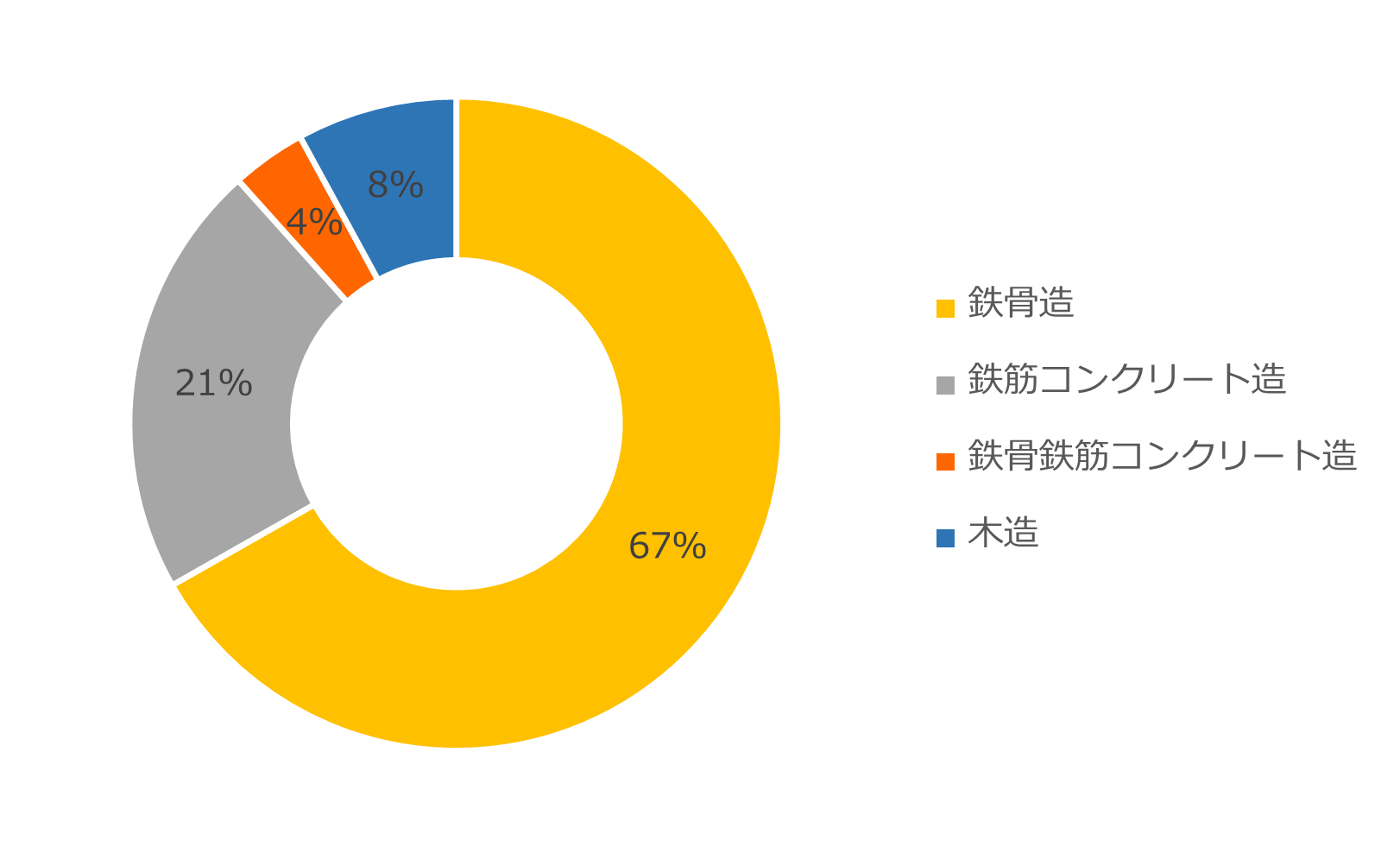
Fig. 1 Industrial building bed area by 2023 (Source: Ministry of Land, Infrastructure, Transportation and Tourism Building Statistics Survey)
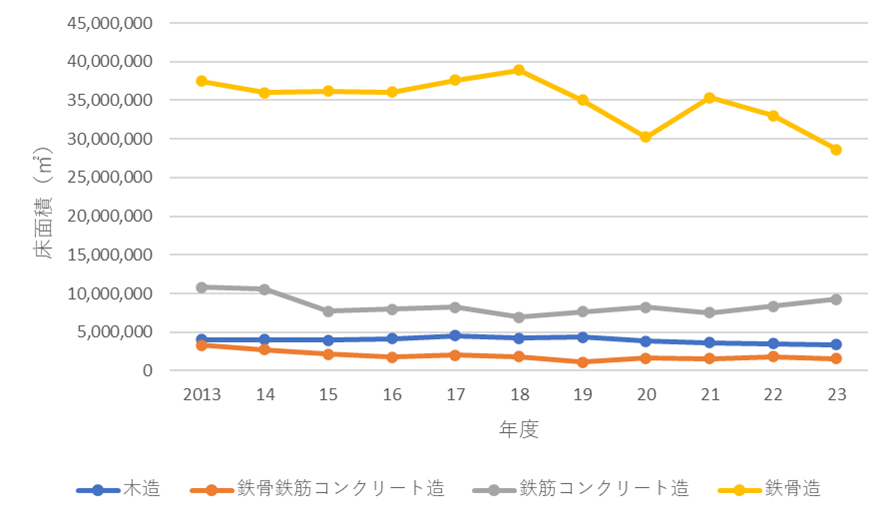
Fig. 1 Industrial building bed area by 2023 (Source: Ministry of Land, Infrastructure, Transportation and Tourism Building Statistics Survey)
3. Advantages of Steel Construction
Steel frame construction is a construction method suitable for creating open, spacious, and free spaces because the frame is composed of beams and pillars. Since the framework is fabricated in a factory and assembled on site, the construction period can be shortened, and construction costs can be kept low.
4. Disadvantages of steel construction
Compared to other structures, steel-framed floors have less damping (the effect of reducing sway over time) and are characterized by a tendency for vibrations to last longer once they begin to sway. The damping constant of a typical steel-frame structure is about 0.01 to 0.02, which is smaller than that of a reinforced concrete structure, which is about 0.03, or a wooden structure, which is about 0.03 to 0.05. As shown in Figure 3, the shaking does not stop easily and fine vibrations continue for a long time, even though the damping constant is only 0.01 smaller than that of reinforced concrete.
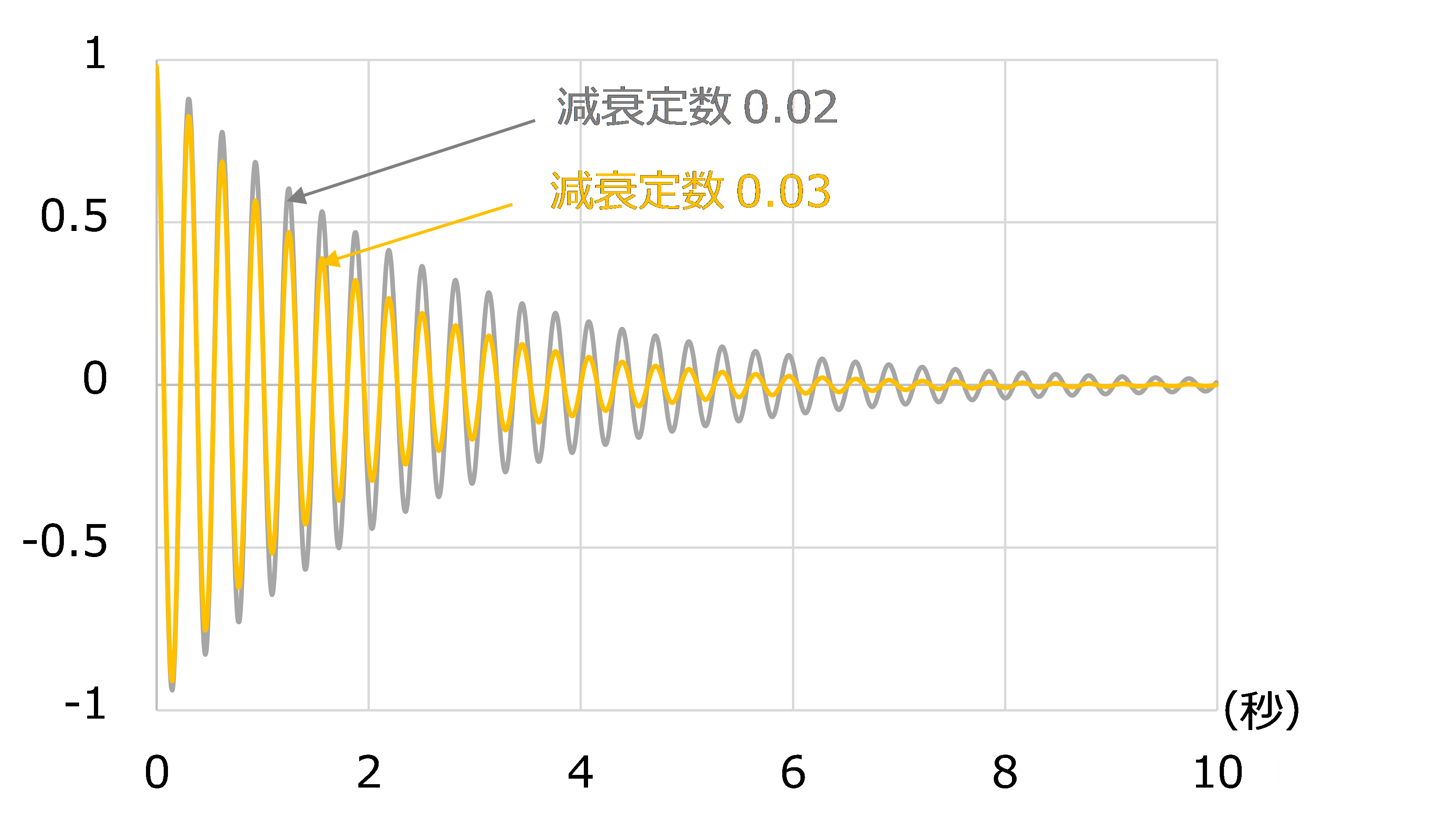
Figure 3 Comparison of steel construction (damping constant 0.02) and reinforced concrete construction (damping constant 0.03)
In addition to this, steel-frame construction has a smaller weight per unit area and a lighter total weight than reinforced concrete construction and other types of construction, making it more prone to swaying. For this reason, steel-frame construction tends to sway easily, and once vibration occurs, it tends to last for a long time, causing discomfort and uneasiness when vibration occurs, which may lead to complaints.
5. Vertical floor vibration countermeasures: Increase rigidity
Here we will consider measures to prevent vibration. One measure is to make the structure sturdier and less prone to swaying. By increasing the rigidity of beams and floor slabs, floor shaking can be reduced. There are three main methods of increasing rigidity that are effective in reducing vibration (Figure 4).
- Increasing the beam cross section increases rigidity.
- Adding beams increases rigidity.
- Adding columns increases rigidity.
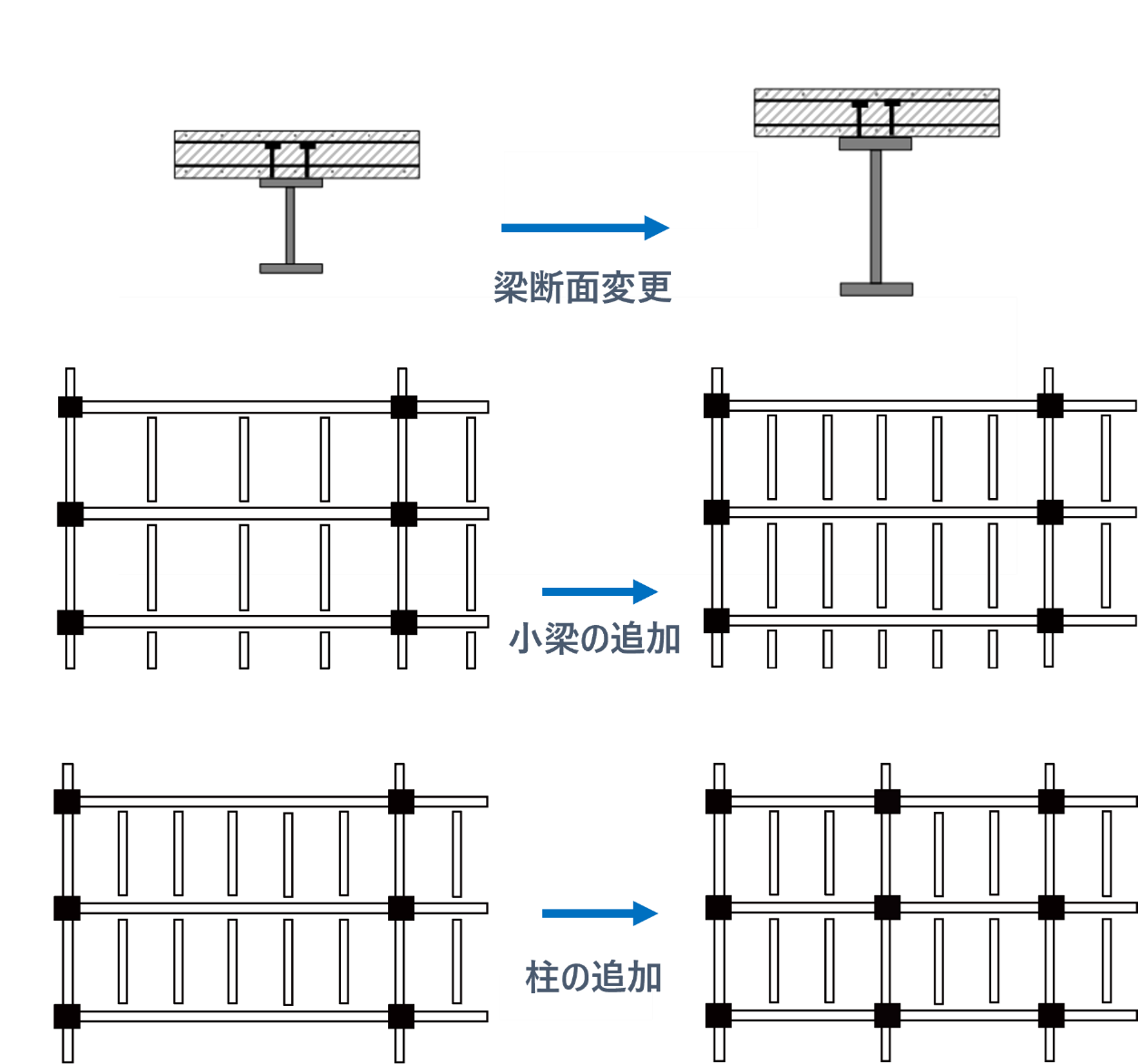
Figure 4: How to increase rigidity
6. Vertical floor vibration control: add damping
Other measures that cannot be taken on the structural side are the addition of damping. Damping can be added to speed up the convergence of shaking and prevent amplification of vibration. TMD (Tuned Mass Damper) and AMD (Active Mass Damper) are devices that add damping. These devices are generally installed during construction, but smaller devices can be used for post-construction or post-occupancy measures.

Figure 5 Example of walking vibration with (vibration control) and without (non vibration control) damping
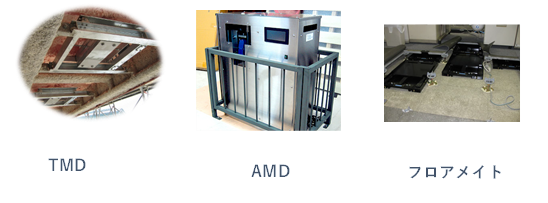
Figure 6: Device for adding damping
- For more information about TMD's product descriptions, please contactthis way (direction close to the speaker or towards the speaker).
- As for AMD's product descriptions.this way (direction close to the speaker or towards the speaker).
- For more information about Floor Mate's product descriptions, please contactthis way (direction close to the speaker or towards the speaker).
